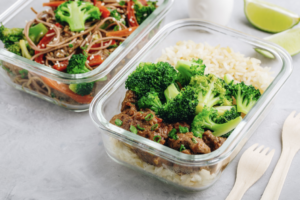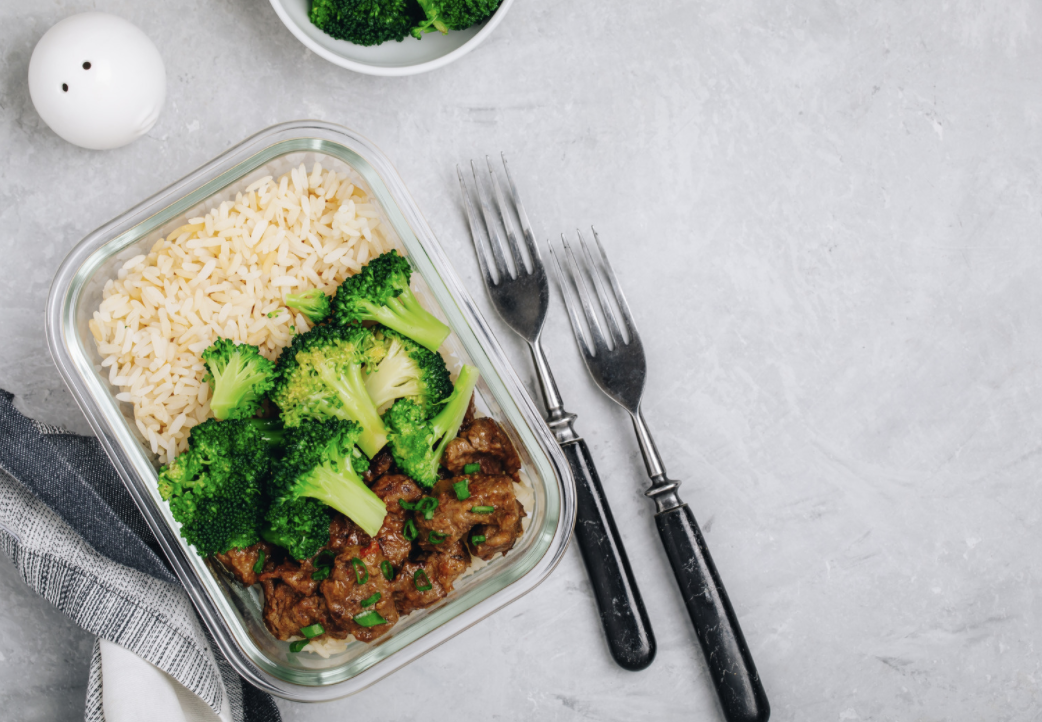Meal Prep & Planovers 101: Meal Planning and Stretching Your Leftovers with Canada Beef
Answering Your Most Searing Storing Questions with Canada Beef Home Economist Joyce Parslow ![]()
![]()
![]()
![]()
![]()
![]()

Meal prepping can be intimidating especially when you’re working with a premium protein such as beef. That’s why The Foodies Group asked Canada Beef Home Economist Joyce Parslow all your most pressing meat storing questions so you don’t butcher your beef in the process!
Q: What cuts of beef store the best for long periods of time?
A: “Whole cuts of beef like roast or steaks can last in the fridge for three days and in the freezer for three to twelve months. Ground beef lasts for about a day from the time of purchase in your fridge and two to three months in the freezer, assuming it’s in a styrofoam tray. If your ground beef comes in a tube, go by the best before date marked on the package. While variety cuts such as liver last one day in the fridge and three to four months in the freezer (all advice is based on a refrigeration temperature of 4 degrees Celsius).”
To access Canada Beef’s storage chart click here
Q: How do you properly defrost a piece of beef?
A: “We recommend that you defrost your beef in the refrigerator as it thaws your beef out gradually. We don’t recommend defrosting on the counter as this can affect both quality and food safety.”
Q: Is it better to freeze beef that is raw or precook it before freezing?
A: “You can freeze both raw and cooked beef successfully, and wrapping both properly before freezing either is certainly key to quality. The advantage of cooking beef before freezing is convenience – you basically have the convenience of ready-to-use beef in your freezer, to add to meals so you get a jump-start on making meals.”
“For cooked roasts or steaks that you plan on using in a ‘next meal’, best to pre-cook them to a more rare doneness than you would if you were going to eat right away. For pot roasts, soups & stews that you make ahead, best to freeze portions in their sauce/gravy, minus potatoes ideally. And for ground beef – this is perfect to cook up as a big batch with some diced onion and/or garlic and some seasonings if you wish – and then freeze in individual portions – or even scoopable portions that you can add to fortify soups, casseroles, pizza and more. We have a how-to-make Big Batch Beef video link here: https://youtu.be/3I_dY5Mlz4M
Recipe link here: https://canadabeef.ca/recipes/scratch-big-batch-beef/.”
Q: Does freezing beef affect the taste of the meat?
A: “Freezing raw beef does not affect the taste as long as you thaw the meat gradually. That is why thawing your meat out in your refrigerator is ideal. You can actually cook beef from frozen as well – just allow 50% more cooking time.”
Q: Does freezing beef make it tough?
A: “No, not necessarily. When you freeze your beef, you are disrupting the cell structure of the meat, which can lead to water loss with defrosting — but that’s one of the reasons you should defrost gradually to minimize any quality compromises.”
Q: How do you prepare your beef for the freezer?
A: “If your beef is just wrapped with plastic wrap from the grocery store, oxygen can get into the membrane of your meat, so you should over-wrap it with a thicker plastic bag or foil –removing as much air as possible. Over-wrapping your meat will also help prevent it from getting punctured by other packages in your freezer. I use milk bags that have been thoroughly cleaned as great bags for freezing. If you have purchased vacuum sealed beef or tubed ground beef, these products are freezer ready and can go right in.”
Q: What are the signs that your beef is no longer good to use?
A: “If you’re in doubt, throw it out” is my mantra. Beef in the freezer that has been kept frozen, can be kept longer than the 3 month guideline – it is not a safety issue, but could be a quality issue.”
Q: Can you refreeze your beef after defrosting?
A: “Yes, you can as long as there are still ice crystals in the meat you can put it back in the freezer. However, if your meat has completely thawed, you should cook it before you freeze it again.”
3 Tips on Preventing Your Meal Prep From Becoming an Udder Disaster

Invest in Quality Storage Containers!
Listen, there’s no point in investing in fresh ingredients if the vessels you’re storing them in aren’t going to optimize their shelf life! That’s why we’re here to help steer you in the right direction.
Meal storage and meal prep containers are excellent devices to keep you organized and help you save money by giving you the option to store your food and waste less. But what containers should you be buying? Plastic, glass, ceramic? With so many options on the market, finding the perfect meal prep container can seem like a needle in the haystack, but we’ve got you covered.
The simple answer is GLASS! Whether that’s mason jars or the mighty Pyrex glass storage sets, glass is the way to go. There are two main reasons why glass rains superior in the meal prep world, with the first being transparency. The most annoying part about meal prepping is creating multiple dishes, storing them, and not knowing which container is holding which meal. With glass, this doesn’t happen. Glass containers allow you to quickly see what’s inside without having to open the container up and risking spoilage or frostbite.
The second reason is glass can be heated. Listen you meal prepped to save yourself and your family time. Let’s not backtrack now by having you waste said time by removing your meals from one container to another. Glass containers can be heated and reheat your food more evenly than your traditional plastic ever could. Glass is an excellent conductor of heat and can withstand high heat without breaking, basically the perfect device when wanting to store food meant to be reheated. Glass containers also keep your food fresher when you reheat as smells or tastes do not absorb into your food the same way plastic containers would.
The steaks are high with food prep and preserving fresh ingredients. Don’t risk spoiling all your hard work by investing in plastic over glass.
Create a Grocery List and STICK to it!
Sticking to your grocery list can be challenging, especially when all your go-to junk food is conveniently on special the day you go shopping. Stay strong and forge through the gluttonous temptation if you truly want to master the art of meal prep!
Grocery lists are the perfect tool to help you tackle your meal prep. Not only are grocery lists a convenient time management device, but they also act as a memory aid, allow you to stay on budget, and reduce the chance of any impulse purchases. When preparing enough meals to feed the herd for months to come, any additional convenience and time advantage is graciously welcomed!
Creating the perfect grocery list can be tricky, but our quick tip is to divide your list into the different sections of your local grocery store. For instance, you could divide your list into fruits, vegetables, meat, dairy, etc. This will save you a monumental amount of time as you no longer have to do circles in your grocery store, all because you split the vegetables you need on your list.
Basically, we’re trying to say that the next time you want to be the home hero and take on the task of meal prep, please trust us and bring the grocery list… you can thank us later!
Strategize Your Prep!
Meal prepping is all about spending a little extra time now to save you lots of time in the future, and that’s why our third top tip is to ALWAYS strategize your prep! Now, what do we mean by “strategize your prep”? First, start off by thinking about what dishes you would like to prepare ahead of time. We suggest starting with three to four meals your first time but if you’re feeling gutsy, choose as many dishes as you and your herd desire.
Deciding on what dishes you would like to meal prep ahead of time not only helps you with time management on your actual prep day but it also allows you to see what ingredients overlap for each dish so that you can prep for multiple dishes at once. We want to save you time in the kitchen, not ruin your day with unnecessary chopping.
Our Top Recipe Picks to Stretch Your Leftovers

Now that you have all these fantastic tips and tricks to store and preserve your beef, you may be thinking to yourself, “that’s great, but how do I make use of all the leftover beef I currently have sitting in my fridge?” We’ve got you covered! The Foodies Group has foraged through Canada Beef’s website to find our top “planover” recipes that you can recreate at home using all your protein-packed leftovers. Take a look below to see what udderly delicious dishes made our list:
Beef Wrapped Maple Parsnip Bites
Beef with Baby Greens Salad and Horseradish Vinaigrette
Beef Tri-tip “Sushi” with Szechwan-style Sauce
Sweet and Sticky Ginger Beef Stir Fry
Need more recipes and tips on how to stretch your leftovers that the whole herd will enjoy? Then head on over to Canada Beef to find out just how the experts re-hoof-innate their beef remnants!

